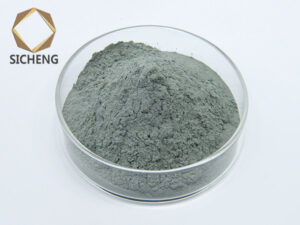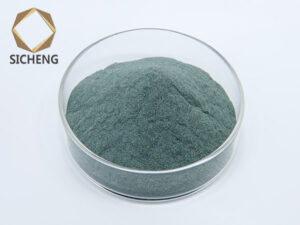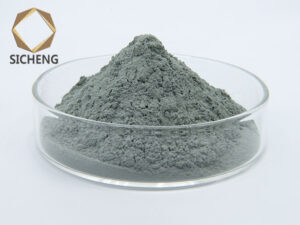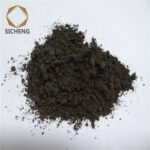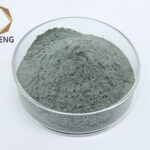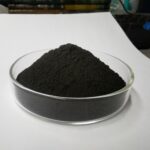Green silicon carbide is an ideal abrasive for alloy parts sandblasting, and the following are its specific advantages:
- Powerful surface cleaning ability: Green silicon carbide has a high Mohs hardness, second only to diamond, cubic boron nitride, and boron carbide. This enables it to quickly remove dirt, oxide layers, or old coatings on the surface of alloy work – pieces during the sandblasting process, while not causing excessive damage to the work – piece substrate.
- High surface quality: The particle size distribution of green silicon carbide is concentrated and uniform, so that the impact force of particles is more consistent during the sandblasting process, and the cutting efficiency is higher. The uniform particle size of green silicon carbide particles can ensure that the surface of the alloy work – piece after sandblasting is flatter, reducing the difficulty and cost of subsequent processing. Moreover, the surface of the work – piece after green silicon carbide sandblasting is delicate and smooth, which can meet the requirements of high – surface quality.
- Good for coating adhesion: Sandblasting treatment with green silicon carbide can make the cleaned surface obtain the required cleanliness and a certain roughness, so as to improve the adhesion of the coating on the substrate surface, ensure the firm combination between the coating and the work – piece surface, and improve the service life and performance of the coating.
- Excellent high – temperature resistance: Green silicon carbide has good thermal stability and can withstand sandblasting operations in high – temperature environments. This makes it have significant advantages in handling high – temperature work – pieces or in occasions where high – temperature sandblasting is required, and can ensure the sandblasting effect and protect the safety of operators.
- Strong adaptability: The surface of green silicon carbide after sandblasting is specially treated, and the micro – powder has a large specific surface area and a clean surface, which has a good compatibility with cutting fluids such as polyethylene glycol. At the same time, it can also be well adapted to various cutting machines, ensuring the smooth progress of sandblasting operations.

